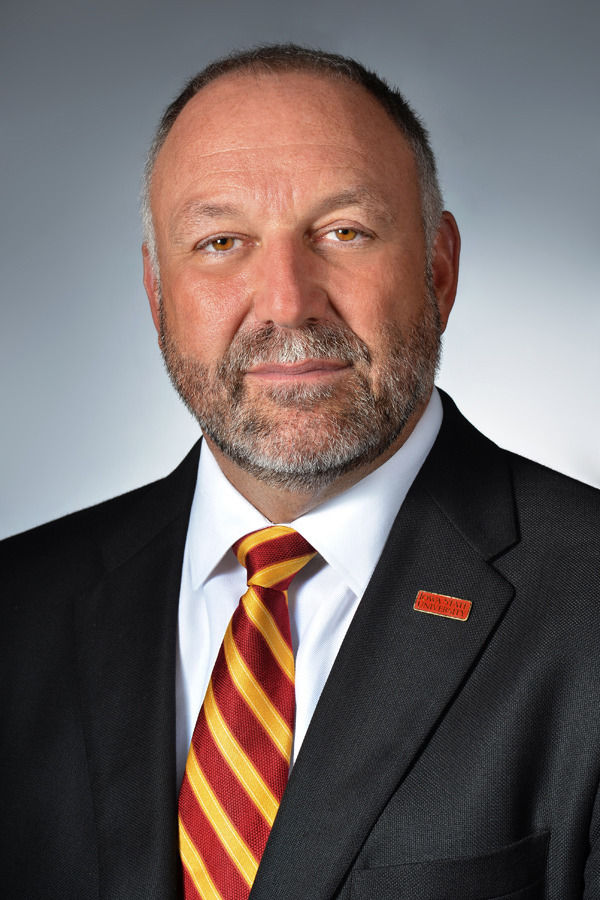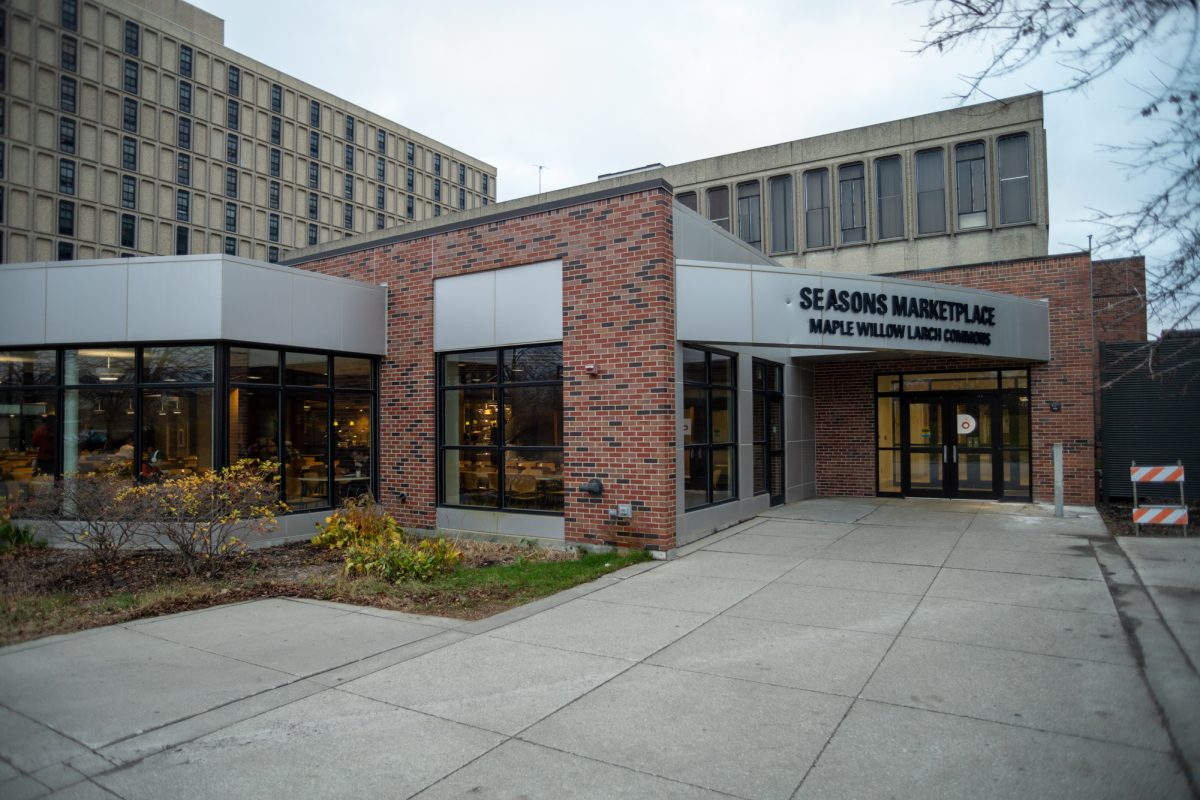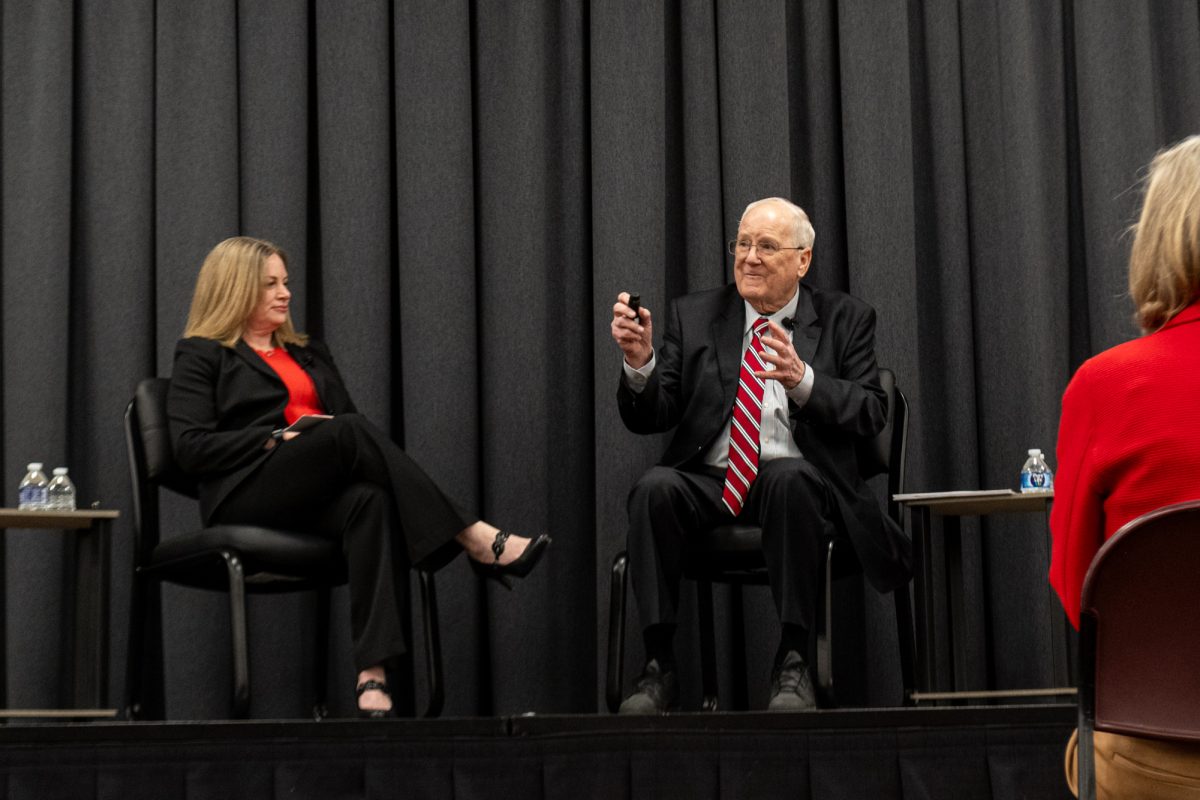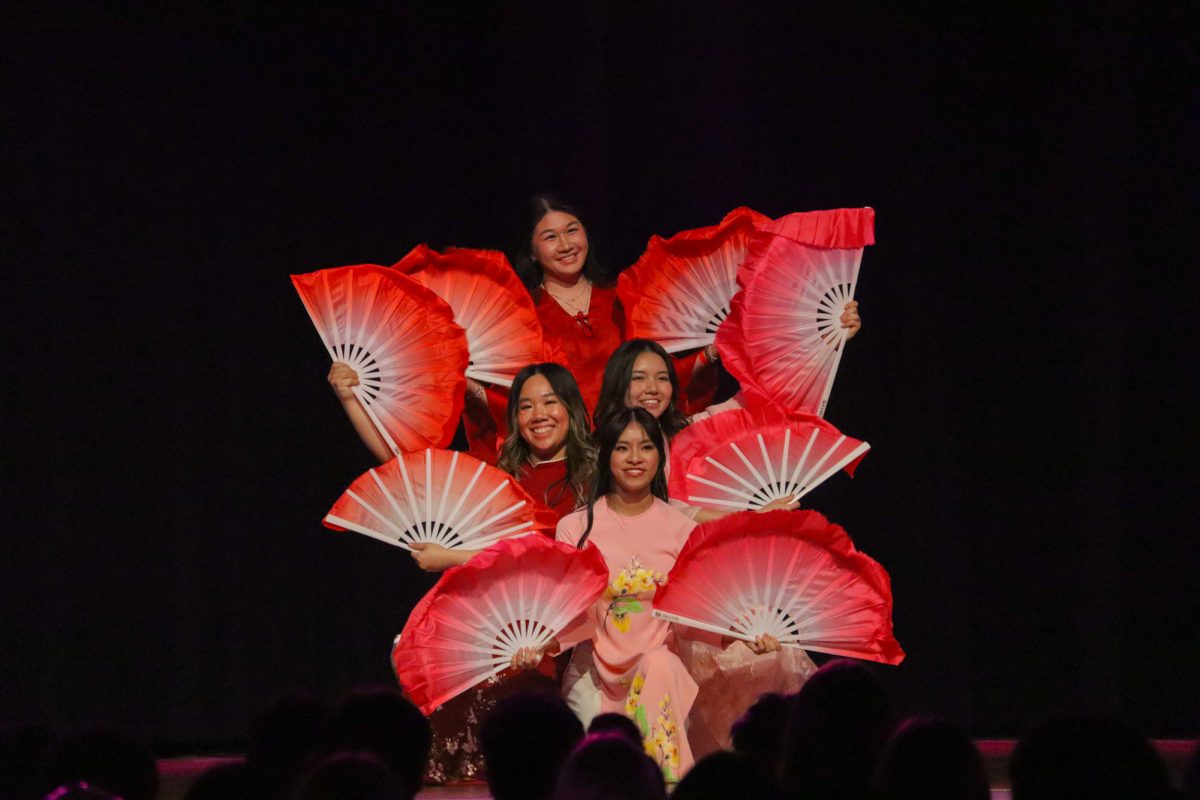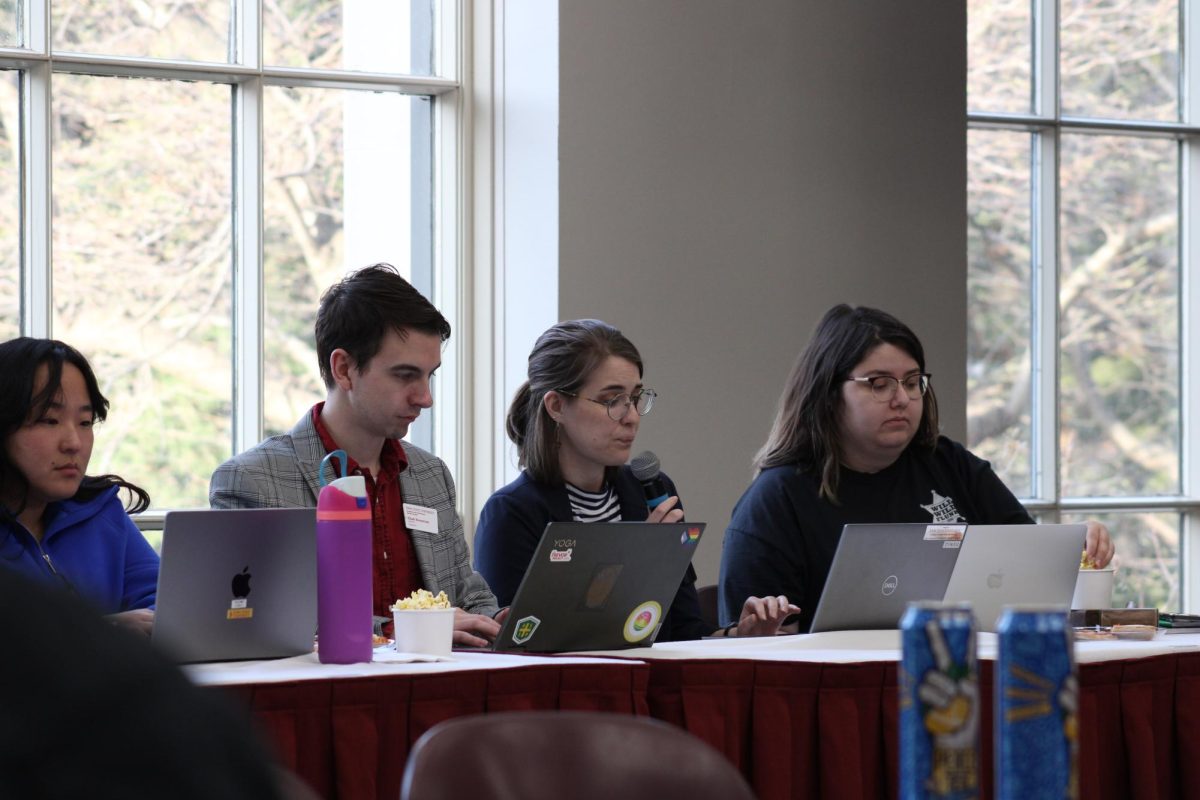A breakdown of Iowa State’s past 15 presidents
October 22, 2017
A look back at Iowa State’s last 15 presidents.
15. Steven Leath was president of Iowa State from 2012 to 2017. Leath had strategic initiatives such as improving the high quality student educational experience, strengthening the university’s scholarship reputation, expanding and developing programs for the state of Iowa and increasing diversity at the university.
Leath “placed major emphasis on enhancing the university’s nationally recognized 1,700-acre central campus and its public art collection, which is one of the largest among U.S. public universities,” according to the university’s website.
Under his presidency, Veishea was discontinued and the name retired in 2014. His use of university planes also caused controversy. Iowa State also reached record enrollment several years in a row. Leath resigned in 2017 for Auburn University.
14. Gregory Geoffroy was president of Iowa State from 2001 to 2012. He led the university through the aftermaths of the terror attacks on the World Trade Center in 2001. Following the attacks, the university was hit with deep budget cuts. Similar cuts would come again in 2008 with the recession.
In 2004, Iowa State’s annual Veishea celebration erupted in riots in Campustown involving approximately 2,000 people and leading to dozens of arrests. Geoffroy suspended Veishea for the following year and commissioned a Task Force to study the causes and potential changes. Veishea resumed in 2006, but most activities were moved from Welch Avenue to Central Campus.
“During his administration Iowa State surpassed several milestones, including the completion of Campaign Iowa State, an $800 million fundraising effort. Iowa State also received record amounts in external grants and funding and welcomed the largest student enrollments up until that time. Geoffroy doubled the amount of endowed faculty positions on campus from 75 to 150 and he strongly supported research efforts into biorenewable energy as shown by the establishment of the Bioeconomy Institute and the BioCentury Research Farm,” according to the university website. Geoffroy is still a faculty member in Iowa State’s Chemistry Department.
Geoffroy is also credited with saving Morrill Hall, one of the original buildings on campus. The newly constructed Geoffroy residence hall is named after him.
13. Martin Jischke was president of Iowa State from 1991 to 2001. “At Iowa State, Jischke focused on retaining and competing for top faculty and staff and supported efforts to improve professional development. The Miller Faculty Fellowship, the Center for Teaching Excellence and Project LE/ARN were all initiated under his administration. Jischke also oversaw numerous improvements to campus facilities,” according to the university website. The Jischke Honors Building is named after him.
12. Gordon Eaton was president of Iowa State from 1986 to 1990. “At Iowa State under Eaton’s leadership, faculty salaries increased 46.2 percent; research funding support increased; minority student recruitment was strengthened, a strategic planning process was established and nine campus buildings were constructed,” according to the university website. Eaton residence hall is named after him.
11. William Robert Parks was president of Iowa State from 1965 to 1986. He led the university through social protests and the farm crisis in the ’80s. Parks was the first social scientist to lead the university. During his inaugural address he shared his philosophy of a “new humanism” and established a goal to integrate human concern with science and technology. He delivered on that goal by greatly expanding the role of the humanities and social sciences within the university. Under his leadership, the Colleges of Education, Design and Business were established, adding 40 undergraduate and 30 graduate majors to the university’s curriculum.
“During his presidency, Parks served as head of several national organizations, including the National Association of State Universities and Land Grant Colleges, the Association of American Universities, Council of Presidents, Mid-America State Universities Association and the Association of Iowa College Presidents,” according to the university website. Parks was also responsible for a major reorganization of the university’s extension and outreach activities. Under his direction, the dean of extension role was created to oversee four divisions collectively known as University Extension. Parks Library is named after Robert and his wife, Ellen Sorge.
10. James Hilton was president of Iowa State from 1953 to 1965. “During his administration, Iowa State experienced the greatest growth in its history. Enrollment soared from 7,800 to more than 12,400. The ‘book value’ of the physical plant increased from $38 million to $471 million. The volume of research rose to $20 million annually. Course offerings and public service programs were greatly broadened,” according to the university’s website. Hilton Coliseum is named after him.
Although he was mainly associated with the development of the Iowa State University Center, comprising Hilton Coliseum (named in his honor), Stephens Auditorium (voted “Building of the Century” by the Iowa chapter of the American Institute of Architects) and Fisher Theater, Hilton once remarked that he received greater satisfaction from his efforts in “getting from the legislature the necessary funds needed to improve salaries, insurance programs, and retirement programs.” He also organized the Iowa State University Foundation to raise private funds.
9. Charles Friley was president of Iowa State from 1936 to 1953. His 17-year term was the longest of Iowa State’s first 11 presidents, and spanned higher education’s most turbulent era, from the closing phase of the Depression through World War II and into the post-war “educational revolution.” It was an administration characterized by emergency efforts, the most notable among them Iowa State’s participation in the Manhattan (atomic research) project. Friley was directly responsible for Iowa State’s establishment of the nation’s first educationally-owned and operated television station, according to the university website. Friley Road and Friley residence hall are named after him.
8. Raymond Hughes was president of Iowa State from 1927 to 1936. During his time at Iowa State, Dr. Hughes guided the college through the difficult Depression years. A program was developed called “cooperative dormitories,” where students could work and clean for room and board. Early forms of federal work-study programs helped some students. Students were also able to rent, instead of purchase, their textbooks. The college used up accounts for loaning to students.
He brought Iowa State into a more harmonious relationship with sister institutions in the state system, promoted the enrichment of technical curricula, broadened research to focus on problems involving interdivisional efforts, established several research and service supporting agencies, most notably the Statistical Laboratory and instituted the development of placement and student counseling services, according to the university website. Hughes Street in Ames is named after him.
7. Raymond Pearson was president of Iowa State from 1912 to 1926. Campus construction during his administration surpassed that of any other era prior to the post-World War II boom; 14 academic buildings in service during the 1970s were constructed during Pearson’s term, according to the university website.
Pearson was leading Iowa State during the time of the first World War, and took a leave from campus in 1917-18 to be an assistant secretary of agriculture in Washington, D.C. He would return to lead the campus through the post-war period.
Following the war there was a surge of enrollment, and therefore a surge in needed construction. Pearson completed the divisional organization of undergraduate programs, strongly promoted the graduate program, which was given divisional status in 1915, broadened extension service and gave wholehearted support to “big-time” goals in athletics.
Pearson Hall is named after him.
6. Albert Storms was president of Iowa State from 1903 to 1910. During his tenure, Iowa State began the Agricultural Extension Service, acquired hundreds of acres of land, developed a plan for campus landscaping and modernization of utilities, and erected 18 new buildings. Iowa State also organized academic departments under the direction of deans, increasing the number and type of courses and degrees offered. In addition, the college lifted the ban on fraternities and sororities as well as loosened other policies regarding the students’ social activities, according to the university website. Storm Street in Ames and Knapp-Storms Dining Complex are named after him.
5. William Beardshear was president of Iowa State from 1891 to 1902. A former minister, Beardshear developed new agricultural programs and was instrumental in hiring premier faculty members such Anson Marston, Louis B. Spinney, J.B. Weems, Perry G. Holden and Maria Roberts.
Beardshear brought more awareness across the state to the college. He began to publicize the college by taking the college to the people and bringing the people to the college. The president traveled the state, delivering commencement addresses and speaking at teacher’s institutes and farmer’s clubs. He convinced the state’s railroads to put on excursion trains at low rates, making it possible for thousands of Iowans to visit the school. He also increased funding from the legislature to double the number of buildings on campus.
Beardshear spearheaded the formation of an athletic association, and banned fraternities on campus, though they would return. The Campanile was built in 1899 during his time as president, according to the university website. He is the only president to die while serving. Beardshear Hall is named after him.
4. William Chamberlain was president of Iowa State from 1886 to 1890. During Chamberlain’s presidency, he regularly defended the college’s curriculum which was often criticized by local citizens for not focusing enough on agriculture. On campus, many students opposed fraternities due to their secretive and exclusionary nature. Thus, his backing of student fraternities would eventually cost him the support of most of the students, according to the university website. Both Chamberlain Place and Chamberlain Street in Ames are named after him.
3. Leigh Hunt was president of Iowa State from 1885 to 1886. The summer before joining Iowa State he married an alumna, Jessie Noble, who was part of Des Moines society, according to student publications at the time. His lack of experience and aggressive style of leadership led to conflicts with the students and faculty. One thing the heavily-agricultural student body did not like was the carriage he kept for transport. His expulsion of two seniors led to a strike of the junior and senior classes. Although Hunt won the strike and the majority of the students returned, his unpopularity caused him to resign after only one year, according to “A Sesquincentennial History of Iowa State University, Tradition and Transformation.” Hunt Street in Ames is named after him.
2. Seaman Knapp was president of Iowa State from 1883 to 1884, after the college’s governing board removed President Adonijah Welch in 1883. Knapp resigned after only one year. While at Iowa State, Knapp was the first Chair of Agriculture. He was responsible for developing the agricultural curriculum and conducting early experiments in animal husbandry, dairy industry and farm crops. Knapp also helped draft the 1883 Experiment Station Bill that was presented to the U.S. House of Representatives, according to the university website. Knapp-Storms Dining Complex and Knapp Street are named after him.
1. Adonijah Welch was president of Iowa State from 1868 to 1883. Welch was serving as a U.S. senator in Florida when he accepted the position of president in 1868.
His most lasting legacy may be the design of Iowa State’s early campus. Welch helped develop Iowa State’s first courses in agriculture and mechanical arts and supported the right of women to receive a college education. The first class was comprised of 173 students, including 136 men and 37 women, thus making Iowa State the first land-grant college to be co-educational from the start.
Welch was often asked to address farmer’s gatherings, horticultural meetings and breeder’s conventions. His wife, Mary Welch, established the first courses in the domestic sciences, which would later become the College of Family and Consumer Sciences, according to the university website. He was removed by the governing board in 1883. Welch residence hall and Welch Avenue are both named after him.
More information on each of the presidents can be found at University Archives or in “A Sesquincentennial History of Iowa State University, Tradition and Transformation.”


